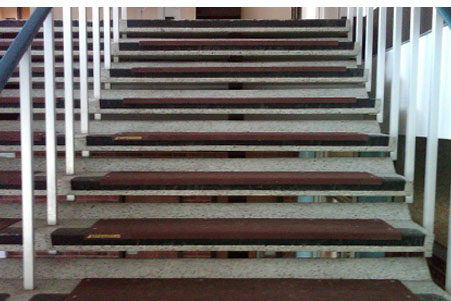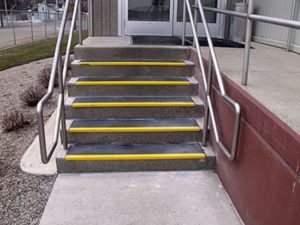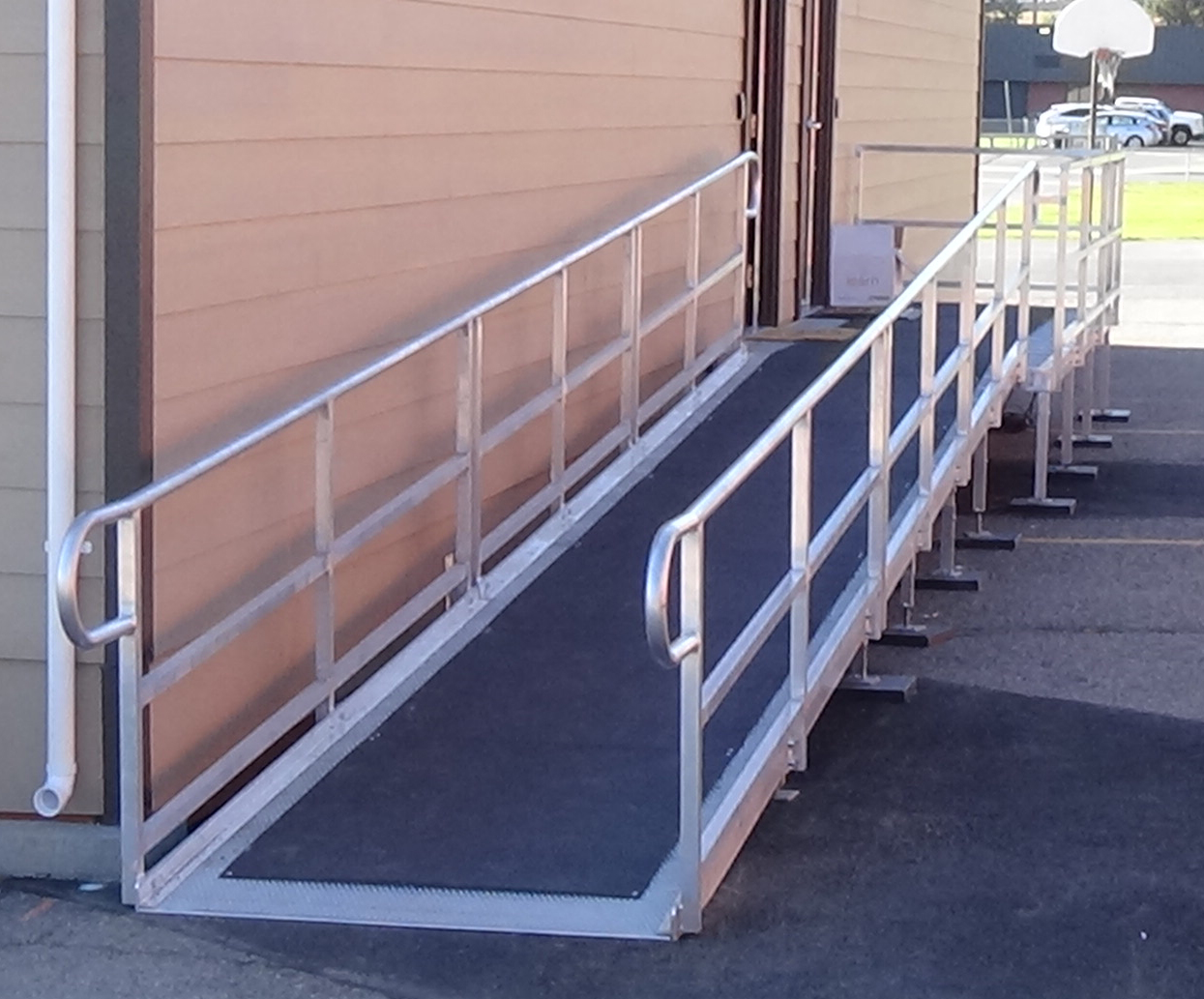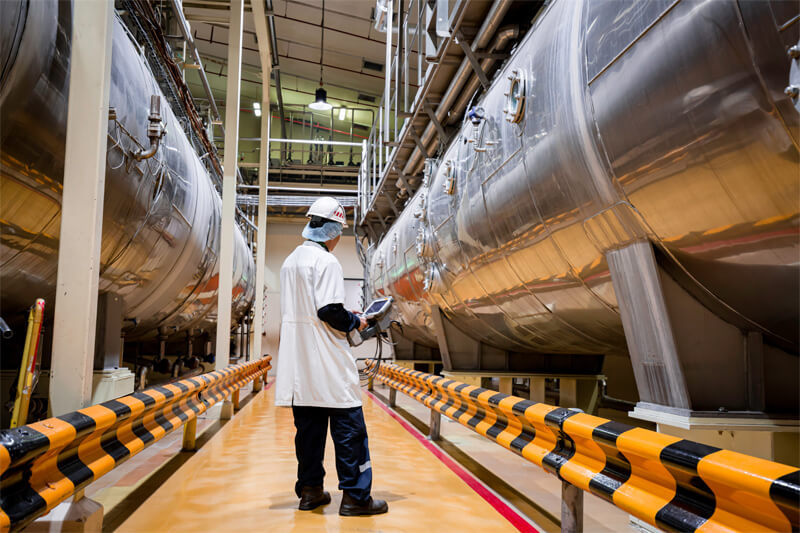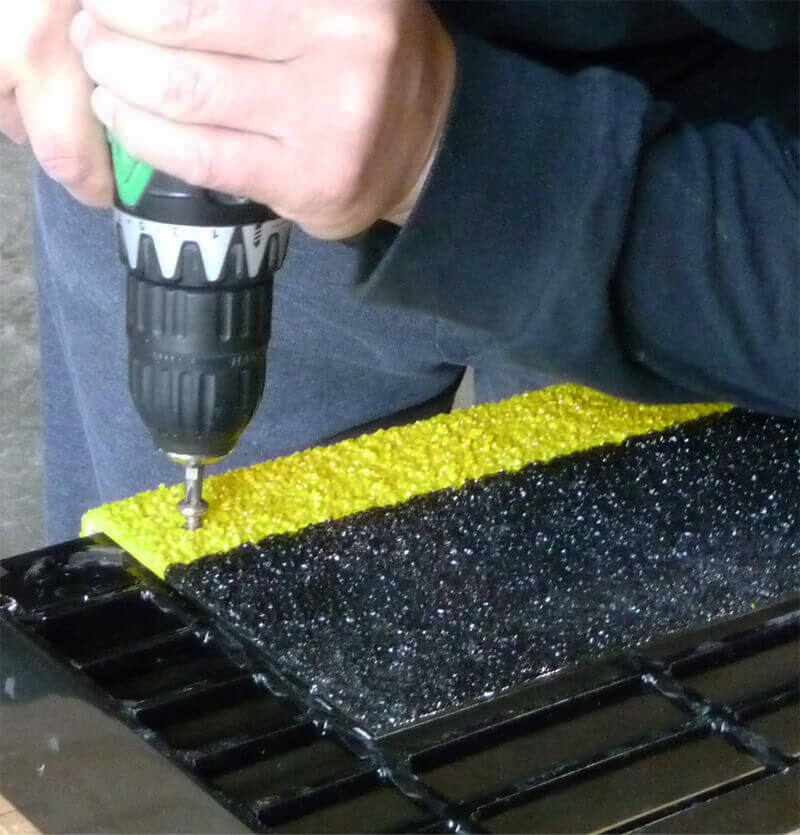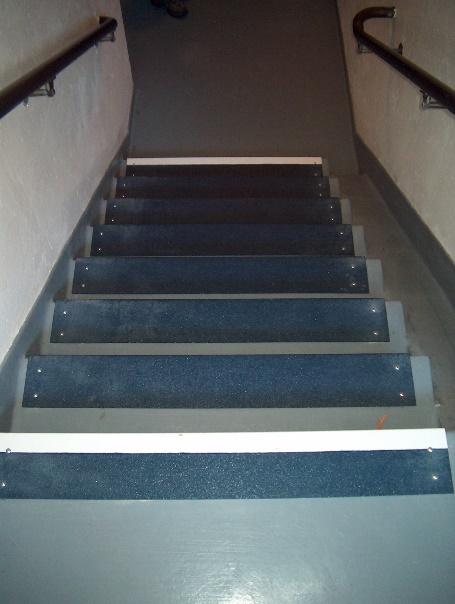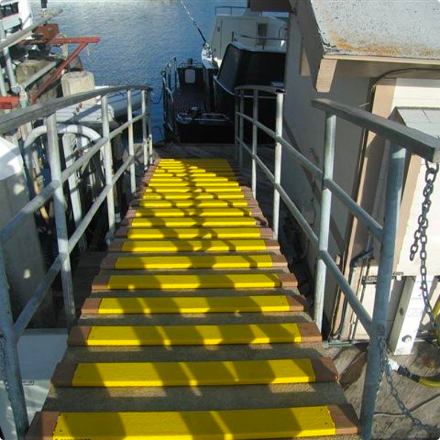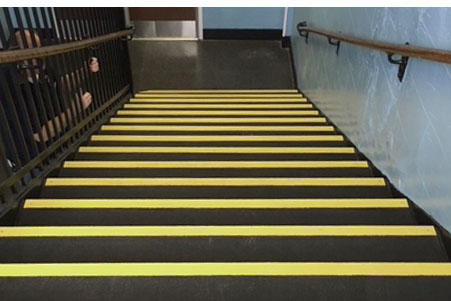
The large volume of traffic in and out of schools and universities every day increases the potential risk of slips-and-falls for students and staff. From a small elementary school to the largest university in the country, slips and trips can occur anywhere and anytime. Slip and fall prevention at schools begins with officials, architects, and facility managers being diligent with protecting students and staff from harm.
Slip and fall prevention isn’t as easy as telling people to be careful. According to the World Health Organization, 37.3 million falls occur each year that are severe enough to require medical attention. If you’re an architect designing a school or university or a facility manager operating one, steps must be taken to create a safe environment.
If these steps fail to happen, you could be facing a number of problems including:
- Lawsuits and claims: Injuries can create considerable financial burdens. According to the Centers for Disease Control, workers’ compensation and medical costs associated with occupational fall incidents have been estimated at $70 billion annually in the United States. Many other countries face similar challenges in the workplace. Plus, the international public health community has a vested interest in developing strategies to reduce the toll of fall injuries.
- Loss of productivity: When a staff member is injured, extra costs associated with training replacements arise. Imagine how much damage control would be needed if you are left without your trusted and trained crew due to an onsite accident. Prevention is the key to maintaining productivity and keeping people out of harm’s way.
- Loss of morale: Individuals who are injured by a fall or trip can suffer significant personal and financial losses and reduced quality of life. Plus, the entire staff can be affected if a facility problem seems to be ignored.
As architects and facility managers, minimizing slips-and-falls in schools or universities while constructing, renovating, or operating within buildings can become an ongoing concern. Here’s a guide to help reduce the risk of injury while on the job:
Slip and fall prevention through design
Architects are qualified to evaluate the safety of places where people can slip, trip, and fall. Therefore, before even beginning the project, it’s vital to consider any potential hazards during the design phase.
Architects must recognize the need for appropriate walking surfaces and include detailed specifications. The following environmental factors are common issues that lead to increased slips, trips, and falls:
- Any area that is open to the elements — rain, snow, ice, or frost
- Walkways that could become uneven
- The transition from one floor type to another
- Irregular steps in stairways
- Freshly waxed or polished floors
- Sloped walking surfaces like access ramps
Architects should be vigilant in questioning the structural safety of all elements about their project’s design to identify any potential risks. Watch for anything that can also create hazardous conditions for staff and students with future usage.
Most importantly, communication between architects and facility managers will help strengthen your plans for long-term slip-and-fall prevention.
Addressing slips-and-falls through facility operations
Facility managers have a lot on their plate, and safety is at the top of that list. Once construction or renovations are finished for a school or university, managers must put in place a fall prevention program that will continue to train staff and support the work of the architects.
1. Audits: Hold weekly, monthly, and quarterly audit to assure each space is adequately evaluated. Quarterly inspections make sure each season is considered to determine where snow, rain, and other conditions create environments where people could slip and fall.
Facility managers should always be on the lookout for hazards such as:
- Areas where cords or cables are exposed
- Ramps that become slippery when wet
- Floors that get wet, greasy, or covered with powder or dust
- Worn or loose carpeting
- Mats that do not lay flat
- Loose or missing floorboards
- Irregular tiles or bricks
- Ladders with damaged or worn rungs
- Surfaces exposed to weather
Having consistent indoor and outdoor maintenance schedules to routinely check on potential safety issues can prevent lawsuits and claims down the line. This checklist from the National Institute for Occupational Safety and Health can get you started.
2. Update your property and equipment: Maintenance and facility managers need to stay alert and make certain that everything is in proper working order. Are walkways, stairs, and pool areas fitted with anti-slip products? Managers can also use safety signs, floor markings, labels, and facility lighting to improve pathway and exit visibility.
- Train facility teams and construction workers to pick up tools or other items as they work.
- If you operate a school with young children, encourage teachers to ensure that students pick up toys.
- Keep a detailed list of areas of concern and potential hazards.
Finding the right solution with Safeguard Technology
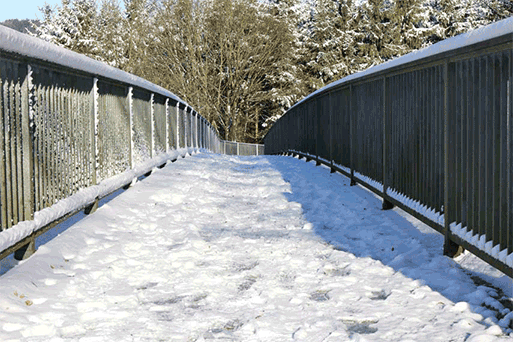
Students and staff count on the safety of their campus, but even with regular audits and inspections, steps, walkways, and access ladders might not be up to the challenge. Safeguard Technology’s products exceed OSHA and ADA standards for slip-resistant properties.
- Hi-Traction® Covers for steps, walkways, and ladder rungs ensure maximum grip on footwear even during those wet, winter months.
- Mats: This easy, portable solution can be quickly installed in problem areas with tool-free installation.
- Anti-slip tape: Tape is ideal for low traffic areas and non-harsh environments that need a quick, low-cost solution.
- Pipe & Cable Covers: A slip-resistant bridge over exposed cords or cables.
Workplace or student injuries can carry tremendous costs for the worker, the student, and the university or school. Facility designers and managers have an obligation to prevent injuries from occurring.
Architects can specify an appropriate level of safety beginning at the design phase. Facility managers can maintain safe conditions every day. Safeguard is ready to help. Give us a call today to see how we can help bring peace of mind to schools and universities.
